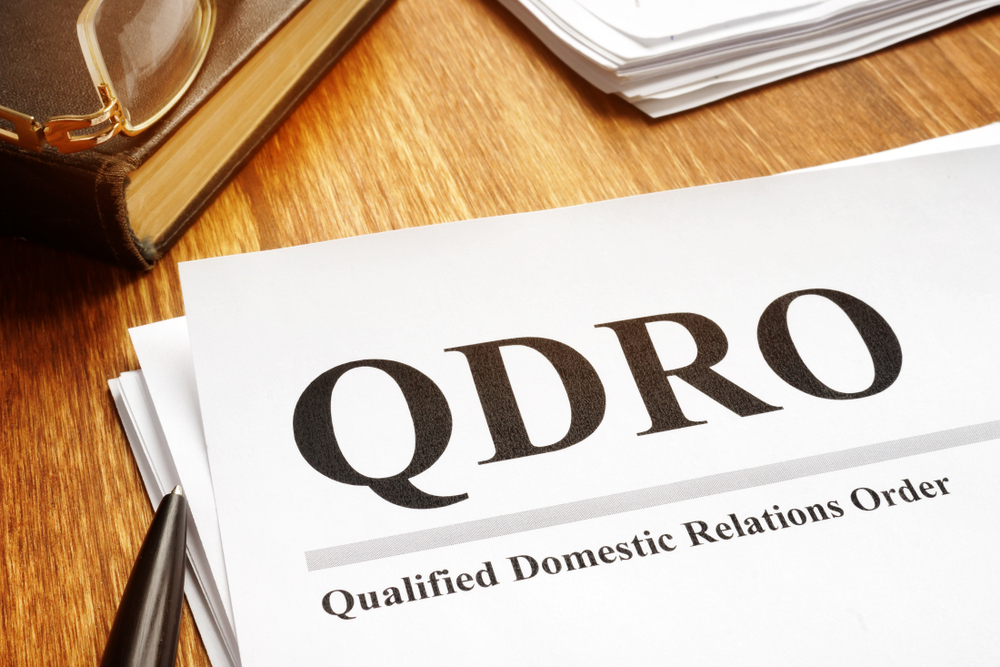In the event of divorce, a qualified domestic relations order (QDRO) assigns a former spouse's or other dependent's interest in a retirement plan.
A QDRO in a Divorce: Definition and Examples
A QDRO is a document that names an alternate payee for an account's assets. It allows a retirement plan's benefits to be shared among multiple people. A QDRO may necessitate the transfer of a portion of a plan's assets to a second payee in order to meet family support or marital property obligations. The plan and details of the QDRO determine the payment terms. Order must meet the following criteria to qualify as a QDRO:- A state agency may issue a judgment, decree, or order, or a state may approve a property settlement.
- Comply with the Employee Retirement Income Security Act and state domestic relations laws (ERISA).
- Relate to child support, alimony, or marital property rights that would benefit the person holding the retirement plan's spouse, former spouse, child, or other dependents.
How Does a Qualified Domestic Relations Order (QDRO) Work in a Divorce?
Instructions for dealing with QDROs must be included in all retirement plans. If you're divorcing, talk to your plan administrator for more information. It's possible that you'll need to file paperwork or take other steps. A spouse, ex-spouse, child, or other dependent must be the alternate payee. Other payees will not be taken into consideration. Your plan administrator may provide you with a standard form that the plan uses. This is frequently free and simple to complete on your own. To obtain QDRO status, you are not required to use one of these sample forms. You can also get legal aid to draught a QDRO. That might be worth the extra cost. It can give you peace of mind that your order will be completed correctly. The form must include the following information:- The plan participant's alternate payee's names and mailing addresses.
- Each plan's name under the QDRO
- The amount of money or a percentage of the plan's assets will go to the alternate payee.
- The total number of payments in the order
- The duration of the order
Different Types of Distributions in a QDRO
As the payee, a QDRO may provide you with one or more options for receiving your portion of the distribution. This could entail receiving the funds in one lump sum. A lump sum payment would necessitate immediate payment of taxes on the distribution. However, if the payee is a child or another dependent, the plan participant is taxed rather than the payee. You can also take the money as an annuity and get your money in monthly installments. This can help you spread your tax burden over a longer period. If you can afford to wait, leaving the money in the QDRO 401(k) or another plan may be a better option. If you choose this option, your assets can continue to grow tax-free until you retire. Regardless of your age, you are not charged the standard 10% early withdrawal penalty when taking money out of a retirement plan under a QDRO. The majority of money taken from a retirement plan before you reach the age of 59 1/2 is considered an early withdrawal, and you will be charged a 10% penalty. You'll have to pay the penalty if you take money out of a retirement plan that a QDRO doesn't cover. Another option is to leave the money in your spouse's plan but keep the option of investing your portion as an alternate payee. You'd have to write the QDRO in such a way that this request is clear. You can also transfer the funds to a rollover IRA. This would allow you to keep the assets tax-free and under your complete control.Important Points to Remember
- In the event of a divorce, a QDRO divides assets into a retirement account.
- A court must issue the order.
- The typical 10% early-withdrawal penalty does not apply to money withdrawn under a QDRO.
- Under a QDRO, payees have various options for receiving their share of assets.


